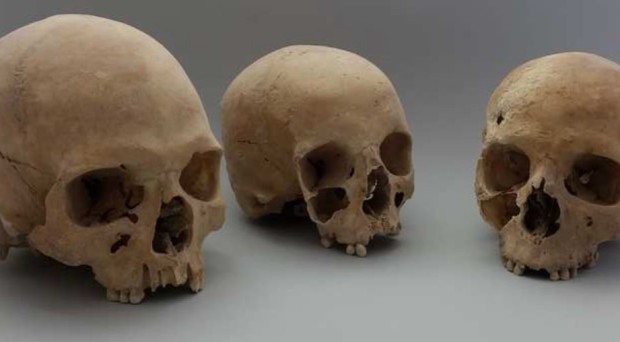
The oldest family tree
Since 1980 skeletal remains of more than 60 individuals were found in Osterode am Harz in the Lichtenstein cave in central Germany. While researchers first thought that the bones were remains of ritual sacrifice, molecular research on short tandem repeat (STR) typing concluded that the Bronze Age skeletons belong to one family clan, spread over five generations.
None of the bones showed signs of violence or post-mortem cut ups. The Lichtenstein family tree supports the theory that the cave was used as a family burial chamber.
In the present-day Upper Harz Mountains, the Iberg Dripstone Cave is dedicated to the exceptional research results from the Lichtenstein Cave and the prehistoric people who were buried there.
The ancient DNA (aDNA) provided the basis for presenting the longest known family tree in the world.
The ancient DNA (aDNA) provided the basis for presenting the longest known family tree in the world and the clan’s life and death as well as facial reconstructions of three members of the Lichtenstein family tree.
What we did
In the present study, we examined the aforementioned prehistoric triad of father, mother and daughter with respect to mobile DNA. Very recent inserts of human-specific Alu short interspersed elements (SINEs), are polymorphic within and between human populations.
We investigated 30 Alu elements, originating from three different Alu subfamilies, to see whether they are preserved in prehistorical skeletal human remains from the Bronze Age Lichtenstein cave.
What did we find?
The aDNA preservation is good enough in two out of three Lichtenstein family members to routinely allow the amplification of 500 bp fragments.
We were able to demonstrate that presence/absence analyses of 26 of the 30 Alu elements can be conducted on these three individuals who lived 3,000 years ago. The aDNA preservation is good enough in two out of three Lichtenstein family members to routinely allow the amplification of 500 base pair (bp) fragments.
For the third individual with less well-preserved DNA, we present an alternative molecular approach to deal with degradation phenomena by using internal Alu subfamily specific primers producing short fragments of approximately 150bp.
The possibility of presence/absence analyses of Alu elements in Bronze Age Lichtenstein family members will be very useful for human population genetic studies and other large-scale investigations that provide insight into Alu SINE-based microevolutionary processes in humans.
- Mobile DNA in the 3,000-year-old Lichtenstein family tree - 19th April 2016
Comments